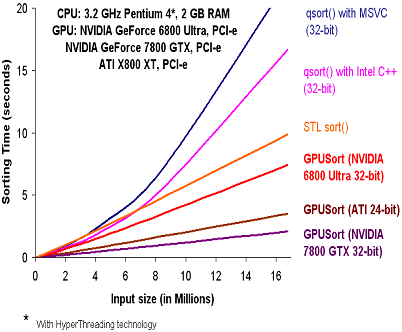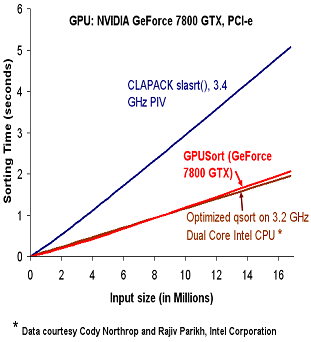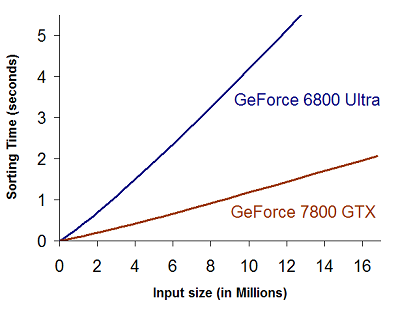A bunch of beanies at UNC's CS department have figured out how to use a GPU (Graphics Processing Unit) to do some sorting, and lo and behold, it's much faster than a general purpose CPU.



It'll be pretty impressive, I'd imagine next-gen consoles will be able to use these first. Xenos on the Xbox 360 is even more generalized than any current other GPU, so it can possibly do even more. It essentially has 48 ALUs and Vector processors on the thing.





Comment